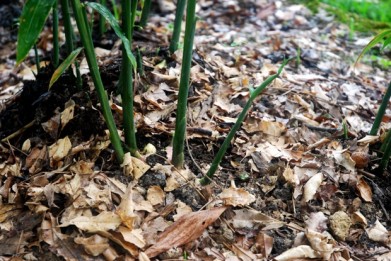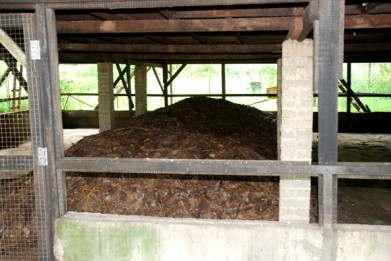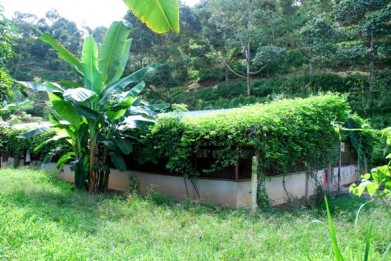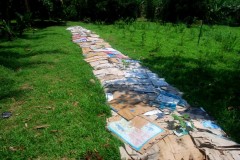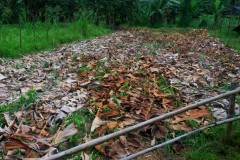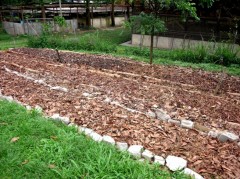Apr 13, 2011
Permaculture At The Farm II
Here are more examples of permaculture (permanent agriculture) at the farm:
Mulching to reduce water loss. Previously we advocated sheet mulching (to reduce weeds, etc ) with cardboard and other cellulose based material. DON'T DO IT! Termites love these heavy cellulose material. Mulching in humid Malaysia should be light to avoid termites and fungal problems. Leguminous cover crop as living mulch is a better idea.
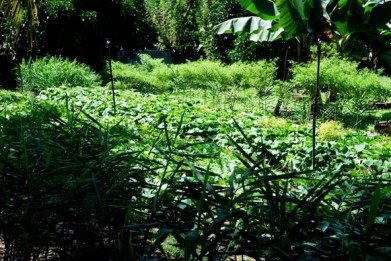
Multi-crop and companion planting of gingers, chilies, sweet potatoes, water melon and passion fruits on raised beds. Permaculture is antithetical to mono-cropping (think oil palm, or think dragon fruit farms; organic or otherwise). On a small farm level, mono-cropping often leads to increasing dependence on chemicals and crops are often decimated suddenly by disease. The recent demise of many dragon fruit farms, both conventional and organic, is one example.
Serai or lemon grass on raised beds with sweet potato as living mulch and companion. Once the sweet potatoes are harvested, leguminous cover crop will be planted to revitalise the soil.
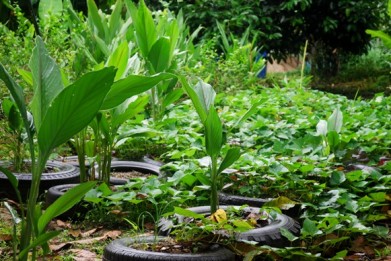
A low maintenance food garden grown entirely on used tires on low yield soggy, clayey soil. Practically no weeding is needed and monthly dressing of compost is all that's needed to produce sweet potatoes, curcuma mangga, lempoyang, kunyit and common ginger.
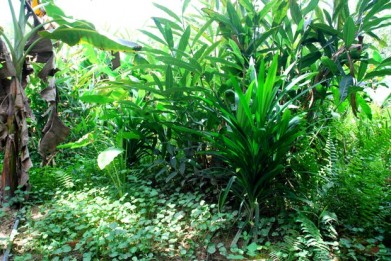
A 3000 sq ft food forest with very low maintenance, fed by a grey water treatment pond, producing taro, banana, papaya, pegaga, lengkuas, pandan, misai kucing, geranggau and other herbs. It provides a rich habitat for wild birds, eels, haruan, sepat, frogs, butterflies, insects, snakes, etc. It is one of our favorite spots in the farm. However, not everybody likes the overly 'friendly' snakes ( we counted 7 species so far ).
Under the traditional Asian chicken coop (on stilts), in-situ composting ( with the aid of farm-brewed IMOs ). This reduces human energy ( in having to remove the dung after every cycle). Removal of the composted material is done once every 8 months or so, and goes straight to the durian trees.
More examples of sun shading using plants - passionfruit, banana ( sematu, as it can reach 20 feet or more, high) and gliricidia septum.

Integrating animal husbandry with fruits - here, free range chickens with bananas. There is no necessity to fertilise the fruit trees at all. Do not integrate durians with chickens.
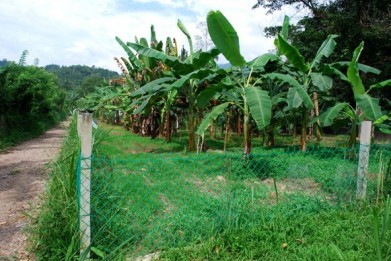
Sematu is best - it has large leaves providing good shade, grows fast and is more hardy than 'improved' bananas like mas or berangan. The sematu above are young trees, barely three months old.
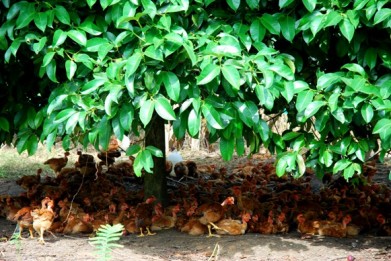
Free range chickens with mangosteen - here, hiding from the mid-day sun under the mangosteen fruit trees.
17:21 Posted in Permaculture | Permalink | Comments (2) | Tags: permaculture, free range chickens, sun shading, grey water treatment, integrated farming, permaculture examples, raised beds, companion planting, mulching, sheet mulching
Apr 27, 2009
Sheet Mulching - Saves Time and Water
Sheet Mulching is another permaculture technique suitable for tropical countries. At our farm, watering needs can be reduced by half using mulching. Sheet mulching keeps soil moist and prevents weeds from proliferating.
Sheet mulching using cardboard. We are growing pumpkins here and we will proceed to companion plant with serai or lemon grass and then add a layer of compost and leaf mulch on top of the cardboard.
Mulching using banana leaves. Here our objective is to retain soil moisture during the initial stages of napia grass growth and also retain the nutrients from our high-N compost variety during some exceptionally hot days lately.
Our objective is to improve on our previous record of 40 tons of high protein, high omega 3 napia grass per acre per 38 days.
Sheet mulching using cardboard, then topped with compost and dry lalang and leaves. We intend to grow melons and pumpkins here and will companion plant with lemon grass or serai.
19:17 Posted in Permaculture | Permalink | Comments (6) | Tags: permaculture, sheet mulching, no-dig, lazy-man








